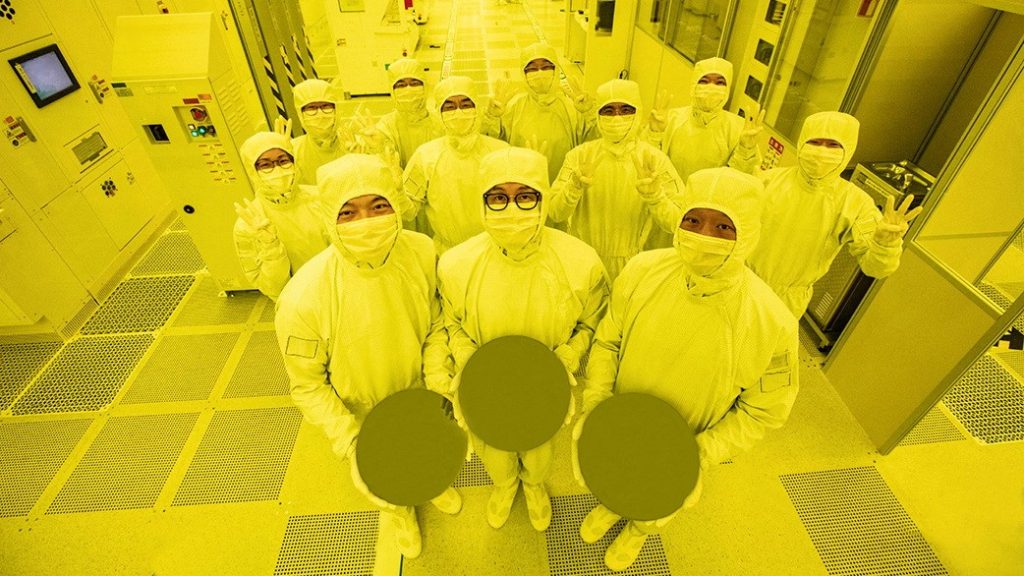Samsung To Extend Production Cuts After $7 Billion Chip Loss In H1

Samsung Electronics on Thursday said the worst is over for the global memory chip market but announced plans to extend production cuts because a demand recovery is largely constrained to high-end chips used in artificial intelligence.
The move underscores the unprecedented semiconductor downturn that led the South Korean firm to incur a record 8.9 trillion won ($7 billion) operating loss from its bread-and-butter chip business in the first six months of this year.
The business is likely to remain in the red in the current quarter, although the loss is seen almost halving to 2.3 trillion won from the second quarter, according to 22 analysts polled by Refinitiv.
A global economic slowdown and high interest rates have dampened demand for most consumer goods following a pandemic-driven boom.
“Production cuts across the industry are likely to continue in the second half, and demand is expected to gradually recover as clients continue to destock their (chip) inventory,” Samsung, the world’s biggest memory chip maker, said in a statement.
Jaejune Kim, executive vice president of Samsung’s memory business, said on an earnings call that it would extend production cuts and make additional output adjustments for certain products including NAND flash chips, which are used to store digital data.
He did not disclose the extent of Samsung’s output cuts but noted the company’s memory chip stocks were rapidly decreasing after peaking in May.
The comments eased concerns about chip oversupply and boosted Samsung shares by 2%, while smaller rival SK Hynix’s shares jumped by 9% to the highest level since March 2022.
SK Hynix, which said on Wednesday that it would cut NAND output by a further 5% to 10%, is seen benefiting more from the concerted efforts due to its heavy exposure to those chips.
“SK Hynix’s weakness is NAND… and it’s reporting a nearly 2 trillion won loss per quarter. More supply cuts could stabilise NAND prices… which would be very good news for Hynix,” said Lee Min-hee, an analyst at BNK Investment & Securities.
AI CATCH-UP
Samsung’s chip division swung to a 4.36 trillion won operating loss in the April-June quarter from a 9.98 trillion won profit a year earlier.
Losses shrank slightly from the first quarter’s 4.58 trillion won due to strong memory chip demand from AI, which led to higher-than-expected shipments of DRAM chips that hold information from applications while the system is in use.
However, Samsung is playing catch-up to SK Hynix, which was better prepared for AI-driven chip demand and leads the market in high-end DRAM chips such as high bandwidth memory (HBM) and premium DDR5 products used to feed data into AI chips, analysts said.
“Although Samsung was first in these high-density chips, it didn’t anticipate these markets will grow so fast, and was superceded by SK Hynix in speed and yield,” Lee said.
SK Hynix became Nvidia’s sole supplier for HBM3 chips last year, while Samsung expects to release its own HBM3 chips later this year, analysts noted.
Samsung said on Thursday it had orders for more than 1.5 billion gigabytes of HBM products this year – double last year – and was working to increase supply capabilities.
But a broader chip demand recovery will need to wait until next year, according to analysts, with AI remaining a rare bright spot in the global tech sector thanks to roaring investment following the successful launch of chatbot ChatGPT late last year.
For the June quarter, Samsung reported a 95% plunge in operating profit to 669 billion won, broadly in line with the company’s estimate but the second-lowest quarterly profit in 14 years.
Its mobile business reported a 16% rise in operating profit to 3.04 trillion won and expects sales growth in the second half, driven by premium products.
A day earlier, Samsung, the world’s largest smartphone vendor, unveiled its latest foldable smartphones, keeping prices at about the same level for a third year as it seeks to challenge Apple’s dominance in the high-end market.
(Reporting by Joyce Lee and Ju-min Park; Editing by Miyoung Kim and Jamie Freed)




